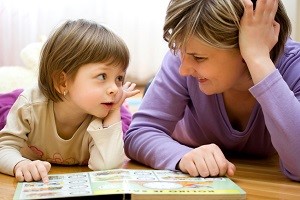Amitriptyline Side Effects: amitriptyline hydrochloride hcl
TweetBrand Name: Celexa
Other Name: Etrafon, Perphenazine, Endep, Tryptizol, Elavil
Drug Class: Antidepressant, TCA
Uses of apo Amitriptyline hcl
Amitriptyline hydrochloride is used primarily to treat major depression (both psychotic and endogenous), especially depression associated with a sleep disturbance. Because of its sedative effects, it may be useful in treating anxiety associated with depression. Elavil should not be used for bipolar disorder (manic depression) as it may precipitate a manic episode.
Amitriptyline hydrochloride is a heterocyclic antidepressant - a class of drugs that inhibits the nerve cells' ability reuptake norepinephrine and serotonin and brings the levels of these neurotransmitters back up to normal. Amitriptyline is very sedating.
Amitriptyline hydrochloride medication is sometimes prescribed for other uses; ask your doctor or pharmacist for more information.
Get information on side effects, precautions, dosage, etc of Amitriptyline hydrochloride (endep)
Action of Amitriptyline hydrochloride hcl
Treatment is symptomatic and supportive. Cardiac arrhythmias and CNS involvement pose the greatest threat and may occur suddenly even when initial symptoms appear to be mild. Therefore, patients who may have ingested an overdosage of amitriptyline, particularly children, should be hospitalized and kept under close surveillance. Induced emesis and gastric lavage are recommended in the alert and conscious patient. Following gastric lavage, activated charcoal may be administered. Twenty to 30 g of activated charcoal may be given every 4 to 6 hours during the first 24 to 48 hours after ingestion. It may be helpful to leave the tube in the stomach, with irrigation (with an electrolyte balanced fluid) and continual aspiration of stomach contents possibly promoting more rapid elimination of the drug from the body. If the patient is not alert, a cuffed endotracheal tube should be inserted before lavage is performed, and emesis should not be induced. An open airway should be maintained. Standard measures (oxygen, i.v. fluids, corticosteroids) may be used to manage circulatory shock and metabolic acidosis. Norepinephrine or other pressor agents (but no epinephrine) by i.v. drop infusion under continuous monitoring may be used if necessary. Failing respiration must be maintained by artificial means, but respiratory stimulants should not be used. Regulate body temperature. Hyperpyrexia should be controlled by external measures, such as ice packs and cooling sponge baths. Catheterization should be performed in the unconscious patient. Continuous cardiac monitoring should be instituted in all patients, particularly in the presence of ECG abnormalities and should be maintained for several days after the cardiac rhythm has returned to normal. Because of its effects on cardiac conduction, digitalis should be used only with caution. If rapid digitalization is required for the treatment of congestive heart failure, special care should be exercised in using the drug.
It has been reported that i.v. administration of physostigmine salicylate may reverse some of the CNS and cardiovascular effects of tricyclic antidepressants. The dosage that has been recommended for adults is 1 to 2 mg in very slow i.v. injection. In children, the initial dosage should not exceed 0.5 mg and should be adjusted to age and response. Since physostigmine has a short duration of action, administration may have to be repeated at 30 to 60 minute intervals particularly in life-threatening signs such as arrhythmias, convulsions, and deep coma recur or persist after the initial dose of physostigmine. Because physostigmine itself may be toxic, it is not recommended for routine use.
The room should be darkened, with a minimal amount of external stimulation, to reduce the tendency to convulsions. If convulsions occur, they should preferably be controlled by non-barbiturate sedatives, such as chlordiazepoxide or diazepam, or by an inhalation anesthetic (amitriptyline increases the CNS depressant but not the anticonvulsant action of barbiturates). Deaths by deliberate or accidental overdosage have occurred with this class of drugs. Since the propensity for suicide is high in depressed patients, a suicide attempt by other means may occur during the recovery phase. The possibility of simultaneous ingestion of other drugs should also be considered. Dialysis has not been found to be of value for intoxication by amitriptyline alone due to low plasma concentrations of the drug.


Sometimes crying or laughing
are the only options left,
and laughing feels better right now.

Current Issue
 Self Help Leaflets Take the help of our self help leaflets or booklets. |
 The DG Magazine All about living with depression |
Alphabatical list of Medicines
A || B || C || D || E || F || G || H || I || J || K || L || M || N || O || P || Q || R || S || T || U || V || W || X || Y || Z
NIMH Medications Booklet- Part I
NIMH Medications Booklet- Part II: Index of Mental Health Medications.
Children's Medications Chart
Cymbalta sometimes used to treat anxiety disorders.
Cymbalta and weight gain
Cymbalta loss weight
Cymbalta and ocd
Cymbalta for depression
Cymbalta duloxetine
Cymbalta and fibromyalgia
Bipolar disorder trileptal
Trileptal side effects
Amphetamine and Dextroamphetamine
Dextroamphetamine
Clomipramine side effects
Mirtazapine side effects

















